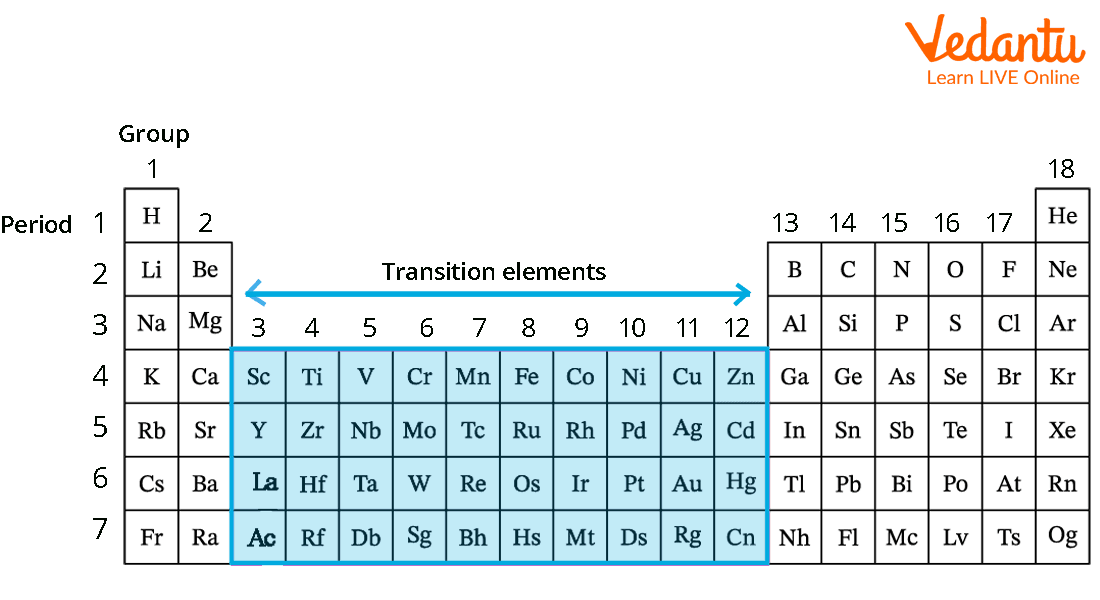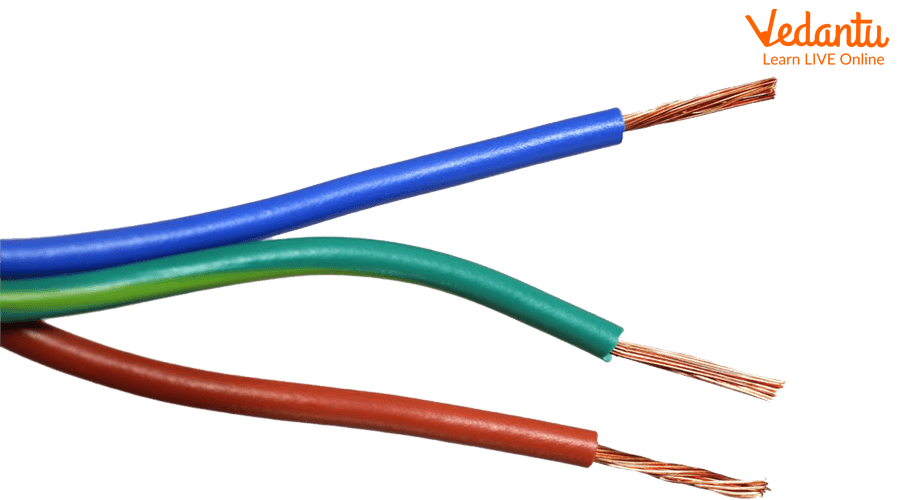




What are Transition Metals?
Transition metals are one of the groups of elements in the periodic table and make up the largest section of the periodic table located at the centre of the table. It includes columns 3 to column 12. This group is also called the “d-block” of the periodic table. Metals such as copper, nickel, and gold are present in this group. Transition metals are metals that can conduct electricity. They have high melting and boiling points. Transition metals can form compounds with different colours. Most transition metals are attracted to magnets.

Transition Metals in the Periodic Table
Uses of Transition Metal in Daily Life
Titanium is used in the production of parts and engines of aircraft.
Iron is the most abundant transition element found in the Earth's crust. It is used as a catalyst in Haber's process to produce Ammonia.
Cobalt is used in paints and pigments because of its brilliant blue colour. It is mostly used in rechargeable batteries.
Copper is the best conductor of electricity and is used in electronics as wires. Copper is also a good conductor of heat, making it very useful to make cooking utensils.
Chromium and nickel are used as anti-corrosive coatings because of their corrosion-resistant properties and lustre.
Platinum's colour and durability make it very valuable for jewellery.
Silver is used in jewellery because of its appearance. It is also used in printed circuit boards due to its high electrical conductivity.
Gold is popularly used in jewellery because of its appearance and also because it does not react with air and water.

Gold is Used to Make Jewellery
Uses of Transition Metals
A unique property of transition metals is that they are essential for biological functions.
Iron is used in our body to create haemoglobin which is used to carry oxygen in the blood and not enough Iron in our blood can cause Anaemia.
Platinum is present in the anti-cancer drug, cisplatin and instruments used for surgery.
Copper is important for the proper development of babies in the womb.
Zinc is used in the human body to heal wounds and to store insulin in the pancreas.
Titanium is used in artificial hip replacement and other implants.
Application of Transition Metals
Transition metals are always used in industries as catalysts for various reactions.
Iron mixed with Manganese and Chromium (both elements are also transition metals) gives Steel. Steel is used for construction purposes, building cars and aircraft, etc.
Nickel is used in producing stainless steel.
Copper is used for electrical wiring.

Copper is Used for Electrical Wires
Learning by Doing
Choose the Correct Answer.
Transition metals have high melting and boiling point.
True
False
Which transition metal is used as an anti-cancer drug?
Iron
Platinum
Cooper
None of the above
Solved Questions
1. Why are transition metals important?
Ans: Transition elements are important for life and evolution because, without iron, oxygen would not reach the brain, and life would be impossible.
2. What are the elements used to make Steel?
Ans: Iron, Manganese, and Chromium are used to make Steel.
Summary
Transition elements or the d-block elements are considered as a “transition” or “bridge” between the main group elements on either side of them on the Periodic Table. Transition elements are crucial to life and evolution because, without iron, oxygen would not reach the brain, and life would be impossible.
FAQs on Uses of Transition Metals
1. Who discovered the transition elements?
The transition metals were discovered and named by the English chemist, Charles Rugeley Bury.
2. Which is the lightest transition metal present?
Scandium is the lightest transition metal. It is denoted by Sc. It has the lowest density among all the transition metals.
3. Why are the d-block elements called transition metals?
The d-block elements are called transition metals because they share many physical and chemical properties with traditional metals but they are less reactive like noble gases. They have in-between properties lending them the name transition metals.









